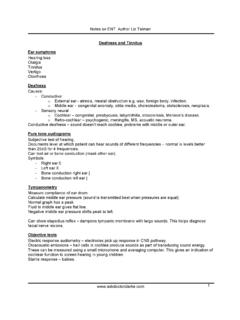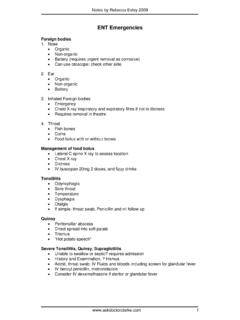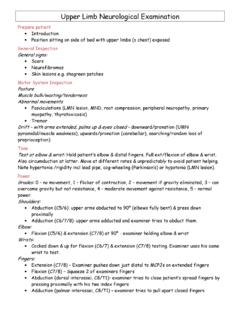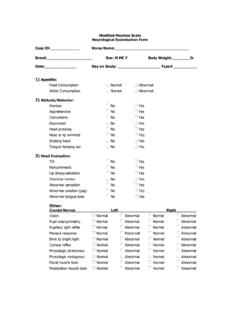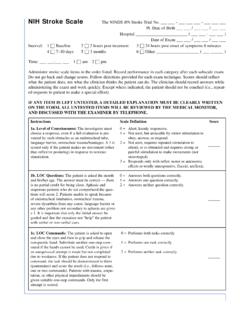Transcription of Pyramidal Pattern of Weakness - Ask Doctor Clarke
1 Pyramidal Pattern of Weakness Question I am a bit confused about what is exactly meant by the term a Pyramidal distribution of upper motor neurone lesion. Can you please clarify the difference between what is seen in the Pyramidal distribution in the upper limb and lower limb please? Response The neurology notes give the details, but here's a brief summary. In a Pyramidal (upper motor neurone) lesion the flexors in the upper limb are stronger than the extensors and the reverse is true in the lower limb. The easy way to remember this is to think of the term from computing- WYSIWIG- what you see is what you get ; only change it slightly to WYSIWIS- what you see is what is STRONG.
2 And then think of someone with a dense hemiplegia from a stroke- with their shoulder adducted to the chest wall, elbow and wrist flexed and fingers adducted together. These flexors and adductors have some retained power and the extensors are relatively weaker- a Pyramidal distribution of Weakness . Then think about the patient walking with a zimmer frame; the weak leg is extended, with the foot plantar flexed and internally rotated. All this makes the limb "too long"- so the only way to walk is to throw the foot outwards- a "circumductive gait". Again, what you see- the extensors working effectively- is what is strong in the lower limb and again this is a Pyramidal distribution of Weakness .
3 This is the whole reason for examining two movements at each joint- to compare whether flexion or extension is the more affected by Weakness . So the standard neurological examination is designed for someone with a stroke, testing 2 movements at each joint to see if the expected Pattern is present. There is a quicker neurological motor examination which I teach on my revision course, which takes half the time and is ideal for casualty or general practice settings, where one is more often looking for a lower motor neurone lesion and where one only needs to test one movement at each joint.
4
